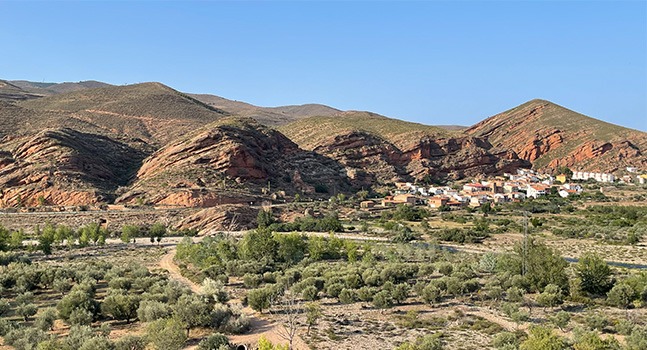16 de April de 2025
Research teams from Spain and Portugal have developed a new open-access repository to enhance knowledge about the geological evolution, georesources, and geohazards of the Iberian Peninsula. This new tool, named SedDARE-IB, compiles data on sediment thickness across the Iberian Peninsula and its oceanic margins.
“This database is essential for reconstructing the geological evolution of the region since the Mesozoic, as sediments record key processes such as basin formation, mountain uplift, and sea-level changes that have shaped the current landscape,” explains Montserrat Torné, researcher at Geosciences Barcelona (GEO3BCN-CSIC) and lead author of the new publication.
The repository, published in the prestigious journal Earth System Data, offers a strategic tool to better understand the Iberian subsurface. Its applications range from assessing geological risks in seismic areas to underground CO₂ storage and energy resource exploration.
“SedDARE-IB not only enriches our understanding of Iberian geology but also stands out as a strategic tool for land-use planning and sustainable management,” adds Torné.
Sediments: A Key Source of Geological and Geophysical Information
Sediments provide critical geological and geophysical insights, allowing researchers to understand geological evolution, rock properties, lithology, seismic responses, and geological risks. Their analysis is essential for interpreting depositional environments, sea-level changes, climate, and sediment origins.
“Accurate information on sediment thickness and distribution is crucial to estimate the geothermal gradient in different areas, which in turn helps identify zones with higher potential for geothermal development,” says the GEO3BCN-CSIC researcher.
In this context, SedDARE-IB is especially relevant in regions where sediments act as thermal insulators or serve as heat reservoirs. It also helps reduce uncertainty in the early stages of exploring resources like deep aquifers, unconventional hydrocarbons, or strategic minerals. By providing a consistent and reliable geological framework, the database supports more informed and sustainable decision-making in subsurface research.
Science Without Borders
SedDARE-IB is the result of joint efforts between institutions from Spain and Portugal to promote open data sharing. Contributors include GEO3BCN-CSIC, 3D Seismic Lab at Cardiff University, Laboratório Nacional de Energia e Geologia (LNEG), CoLAB NET4CO2, and the Geological and Mining Institute of Spain (IGME-CSIC). “Collaboration between Spanish and Portuguese teams has been key to building a truly Iberian database, free from administrative barriers or limitations in scientific data exchange,” highlights Torné.
“This cooperation has made it possible to combine efforts, share knowledge and infrastructure, and create a much more accurate and comprehensive view of the subsurface. It also boosts the project’s international visibility and lays the foundation for future cross-border geoscience initiatives.” Designed as an evolving repository, the tool is open to incorporating new data to improve its coverage or resolution, especially in underrepresented areas.
“Our goal is for SedDARE-IB to remain a dynamic and valuable tool that can continue to grow thanks to future contributions from the scientific and technical communities interested in Iberian geology,” concludes the GEO3BCN-CSIC researcher. The repository is now available as open access, offering new opportunities for both the research community and companies in the geological and energy sectors.
Reference
Torne, M., Alves, T. M., Jiménez-Munt, I., Carvalho, J., Ayala, C., Ramalho, E. C., Gómez-García, A. M., Matias, H., Heida, H., Balaguera, A., García-Lobón, J. L., and Vergés, J.: SedDARE-IB: an open-access repository of sediment data for the Iberian Peninsula and its continental margins, Earth Syst. Sci. Data, 17, 1275–1293, https://doi.org/10.5194/essd-17-1275-2025, 2025.

